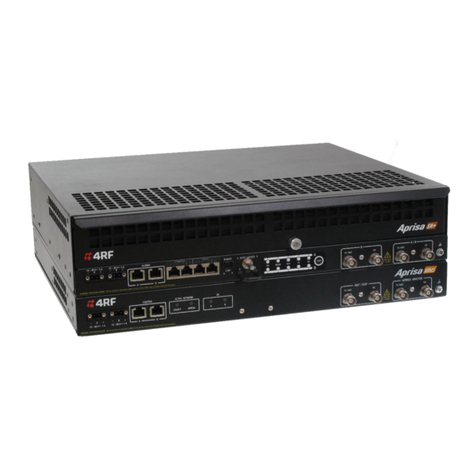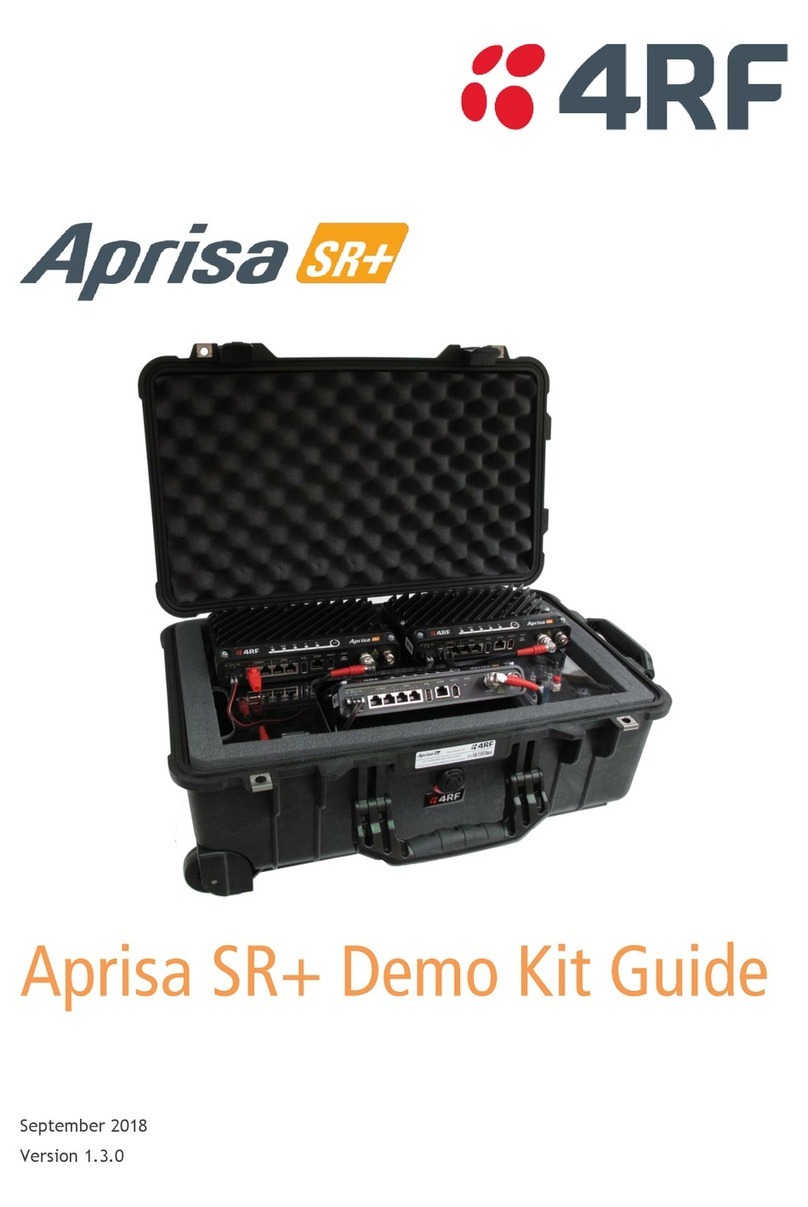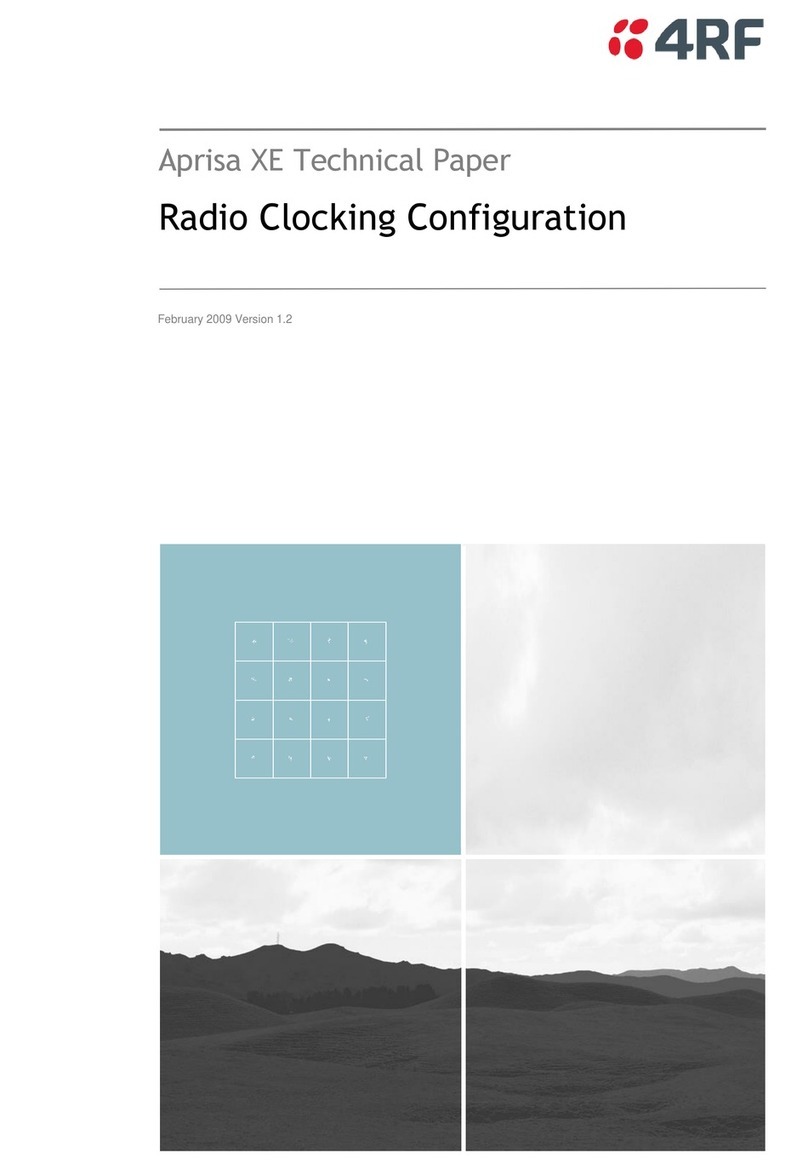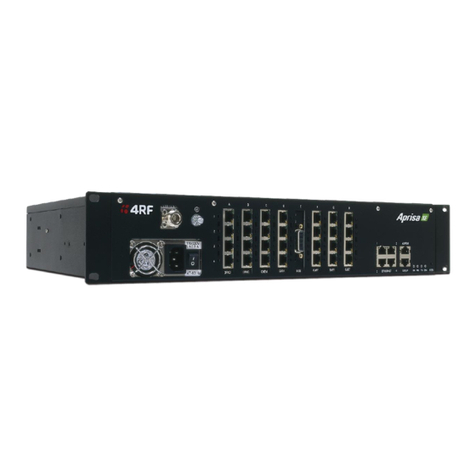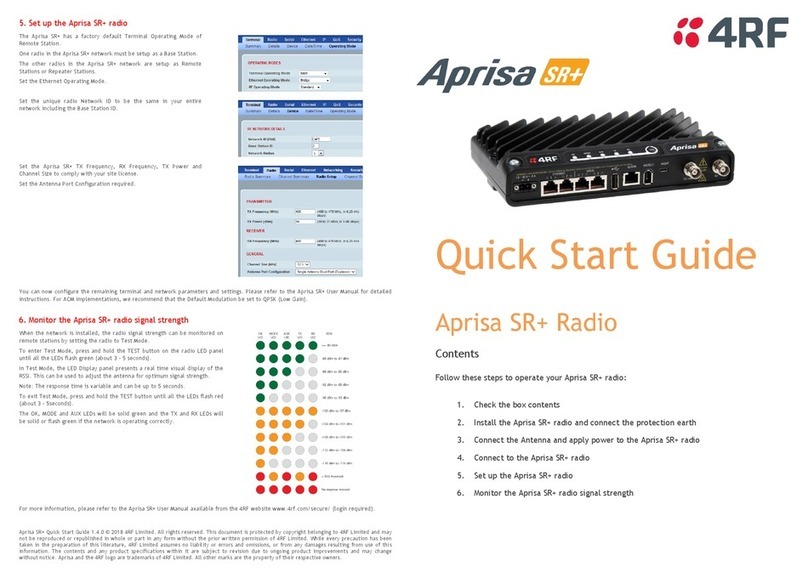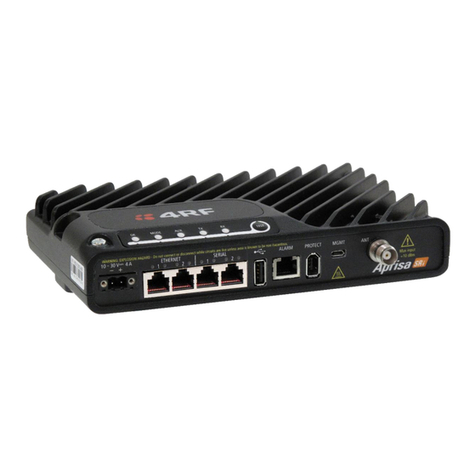
Aprisa SR+ User Manual 1.5.3
Front Panel Connections .......................................................................41
LED Display Panel ...............................................................................42
Normal Operation ........................................................................42
Single Radio Software Upgrade.........................................................43
Network Software Upgrade .............................................................43
Test Mode .................................................................................44
Network Management ..........................................................................45
Hardware Alarm Inputs / Outputs ............................................................46
Alarm Input to SNMP Trap...............................................................46
Alarm Input to Alarm Output ...........................................................46
Aprisa SR Alarm Input to Aprisa SR+ Alarm Output ..................................46
4. Implementing the Network.......................................................... 47
Network Topologies .............................................................................47
Point-To-Point Network ..........................................................47
Point-to-Multipoint Network.....................................................47
Point-to-Multipoint with Repeater 1............................................47
Point-to-Multipoint with Repeater 2............................................47
Initial Network Deployment ...................................................................48
Install the Base Station ..................................................................48
Installing the Remote Stations .........................................................48
Install a Repeater Station ...............................................................48
Network Changes................................................................................49
Adding a Repeater Station ..............................................................49
Adding a Remote Station ................................................................49
5. Preparation ............................................................................ 51
Bench Setup......................................................................................51
Path Planning ....................................................................................52
Antenna Selection and Siting ...........................................................52
Base or Repeater Station.........................................................52
Remote station ....................................................................53
Antenna Siting .....................................................................54
Coaxial Feeder Cables ...................................................................55
Linking System Plan ......................................................................55
Site Requirements...............................................................................56
Power Supply..............................................................................56
Equipment Cooling .......................................................................56
Earthing and Lightning Protection .....................................................57
Feeder Earthing....................................................................57
Radio Earthing .....................................................................57
6. Installing the Radio ................................................................... 58
Mounting..........................................................................................58
Required Tools............................................................................58
DIN Rail Mounting ........................................................................59
Rack Shelf Mounting .....................................................................60
Wall Mounting.............................................................................61
Installing the Antenna and Feeder Cable ....................................................62
Connecting the Power Supply .................................................................63
External Power Supplies.................................................................63
Spare Fuses................................................................................64
Additional Spare Fuses............................................................65
